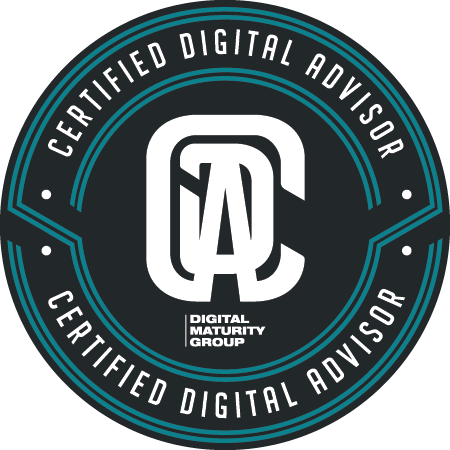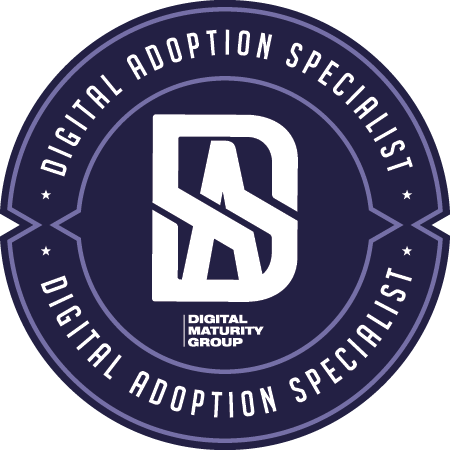In today’s rapidly evolving digital landscape, businesses must embrace technological advancements to stay competitive and relevant. Two key concepts that often come up in discussions about digitalization are digital adoption and digital transformation. While these terms are related, they represent distinct approaches to leveraging technology to drive organizational growth and success. This article aims to clarify the difference between digital adoption and digital transformation, highlighting their unique characteristics, benefits, and implications.
The digital landscape has revolutionized how organizations operate, communicate, and deliver value to their customers. Digital adoption and digital transformation are two approaches that organizations can employ to harness the power of technology. While they share some similarities, understanding their differences is crucial for businesses looking to navigate the digital realm effectively.
Understanding Digital Adoption
- Definition of Digital Adoption: Digital adoption refers to the process of integrating new digital tools, platforms, or software into an organization’s existing workflows and processes. It involves ensuring that employees fully understand and embrace these digital tools to optimize their use and reap the intended benefits.
- Importance of Digital Adoption: Digital adoption is essential because it enables organizations to maximize the value of their digital investments. Without proper adoption, new technologies may go underutilized or result in inefficiencies. By focusing on digital adoption, businesses can bridge the gap between technology implementation and effective utilization, ensuring a seamless transition to digital workflows.
- Benefits of Digital Adoption: Effective digital adoption yields several benefits for organizations. These include increased productivity, streamlined processes, improved data accuracy, enhanced collaboration, and greater employee satisfaction. When employees fully adopt digital tools, they can leverage their functionalities to achieve optimal outcomes, thereby driving organizational growth.
Exploring Digital Transformation
- Definition of Digital Transformation: Digital transformation refers to the comprehensive and strategic overhaul of an organization’s entire business model, processes, and operations through the integration of digital technologies. It goes beyond individual tool adoption and encompasses a holistic change to leverage digital capabilities across the organization.
- Key Components of Digital Transformation: Digital transformation involves multiple components, including customer experience enhancement, operational efficiency, business model innovation, and cultural change. It requires a deep understanding of customer needs, the ability to leverage data and analytics, and the willingness to adapt existing business processes to align with digital best practices.
- The Role of Digital Transformation in Business: Digital transformation has become imperative for businesses to remain competitive in the digital age. It enables organizations to reimagine their customer interactions, drive innovation, optimize operations, and create new revenue streams. By embracing digital transformation, businesses can position themselves for long-term success and sustainability in an increasingly digital-centric world.
Digital Adoption vs. Digital Transformation
While digital adoption and digital transformation share a common goal of leveraging technology, they differ significantly in their objectives, scope, and impact on organizations.
- Different Objectives: Digital adoption focuses on integrating specific digital tools into existing workflows to optimize their usage and benefits. On the other hand, digital transformation aims to fundamentally reshape the entire organization, its processes, and culture to thrive in the digital era.
- Scope and Focus: Digital adoption has a narrower focus, targeting specific tools or software within an organization. It seeks to ensure that employees are proficient in using those tools effectively. In contrast, digital transformation is a broad and comprehensive initiative that affects all aspects of the organization and requires a holistic approach to reimagine business models, customer experiences, and operational processes.
- Impact on Business Processes: Digital adoption primarily impacts specific workflows or departments where new tools are introduced. It enhances efficiency within those areas but may not significantly alter the overall organizational structure. Conversely, digital transformation affects the entire organization, leading to substantial changes in processes, structures, and strategies to embrace a digital-first approach.
- Employee Engagement and Cultural Shift: Digital adoption focuses on training and engaging employees to adopt new digital tools. It often requires a cultural shift to foster a tech-savvy and adaptable workforce. Digital transformation, however, necessitates a more profound cultural change throughout the organization, encouraging innovation, collaboration, and a digital mindset at all levels.
- Relationship between Digital Adoption and Digital Transformation: Digital adoption is a critical component of digital transformation. Without successful adoption of digital tools, the broader transformation initiatives may fall short of their intended outcomes. Digital adoption sets the foundation for digital transformation by ensuring employees are comfortable with technology and ready to embrace the larger organizational changes.
Conclusion
In conclusion, digital adoption and digital transformation represent distinct approaches to leveraging technology in organizations. Digital adoption focuses on integrating and maximizing the value of specific digital tools, while digital transformation aims to revolutionize the entire organization’s processes, culture, and business model. Both are vital in today’s digital landscape, and their successful implementation can lead to increased productivity, improved customer experiences, and sustained competitive advantage.
FAQs
- What is the primary goal of digital adoption? The primary goal of digital adoption is to ensure that employees effectively use and leverage digital tools and technologies to enhance productivity, streamline processes, and achieve optimal outcomes.
- How does digital transformation affect customer experience? Digital transformation positively impacts customer experience by enabling organizations to deliver personalized and seamless interactions across various touchpoints. It allows for enhanced self-service options, faster response times, and tailored offerings based on customer data and insights.
- Can an organization undergo digital transformation without digital adoption? While it is technically possible for an organization to undergo digital transformation without proper digital adoption, the chances of success are significantly reduced. Digital adoption lays the groundwork for digital transformation, ensuring that employees are comfortable with technology and can embrace the broader changes.
- Are digital adoption and digital transformation one-time processes? Digital adoption and digital transformation are ongoing processes. Technology continues to evolve, and organizations must continually assess, adopt, and adapt to new digital tools and strategies to remain competitive and relevant in the ever-changing digital landscape.
- How can businesses ensure successful digital adoption and transformation? To ensure successful digital adoption and transformation, businesses should invest in comprehensive training programs, foster a culture of innovation and learning, provide ongoing support and resources, and actively involve employees in the process. Additionally, aligning digital initiatives with business goals and regularly measuring outcomes can help track progress and make necessary adjustments.
Book a Wingman Today for a Free Digital Adoption Plan Consultation
There is no doubt that technology is critical to your business today. Organizations need to adopt a digital-minded strategy to be able to thrive. But it’s essential that technology is deployed correctly. And more specifically, you shouldn’t start without a solid digital adoption plan in hand.
If you feel that your current technology infrastructure might be holding your organization back from reaching your goals and objectives, it may be time to invest in a digital adoption plan, like what Wingman can provide you. Contact us today and we can show you how to make your technology work harder and smarter for you by creating your own unique digital adoption plan.
PS: Secure your $15,000 Canada Digital Adoption Grant Today
Did you know you can get up to $15,000 grant towards your digital adoption plan…and an interest free loan up to $100,000 and a hiring subsidy to implement it? Ask us about the Canada Digital Adoption Plan and Boost Your Business Technology Grant. Wingman is an approved CDAP Digital Advisor partner of Canada’s Innovation, Science and Economic Development Canada. Only an approved CDAP Digital Advisor can help you access the CDAP grant to have your digital adoption plan get approved through the CDAP program.
Book a Wingman today to discuss how we can help.




